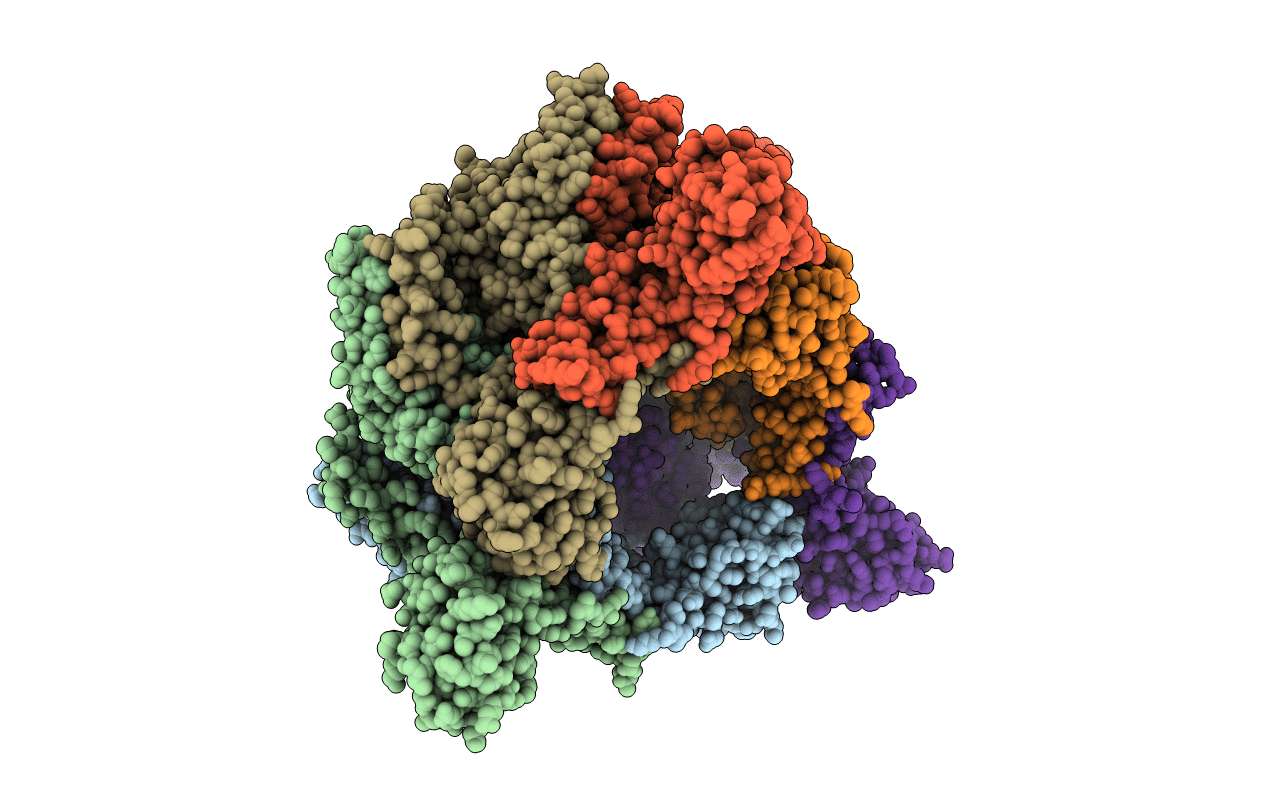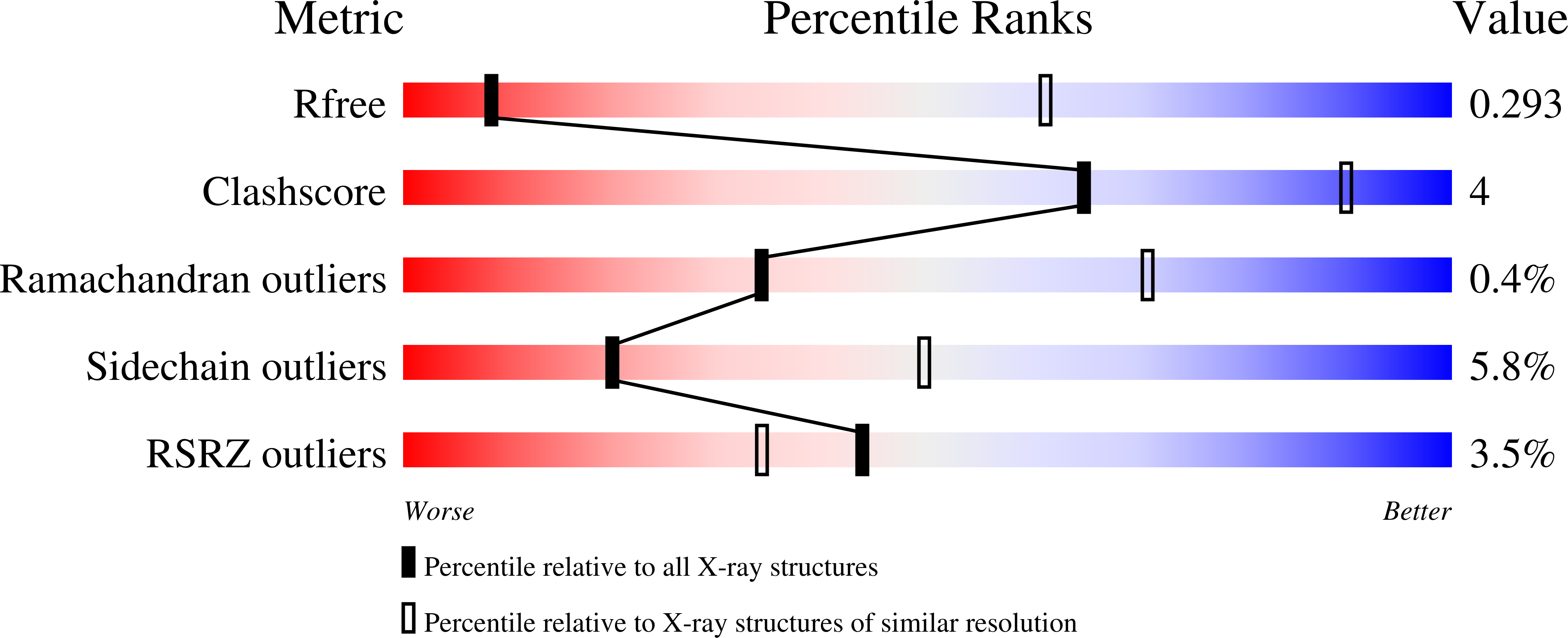
Deposition Date
2019-10-17
Release Date
2021-04-28
Last Version Date
2024-01-24
Entry Detail
PDB ID:
6T66
Keywords:
Title:
Crystal structure of the Vibrio cholerae replicative helicase (DnaB) with GDP-AlF4
Biological Source:
Source Organism:
Vibrio cholerae (Taxon ID: 666)
Host Organism:
Method Details:
Experimental Method:
Resolution:
3.90 Å
R-Value Free:
0.27
R-Value Work:
0.25
R-Value Observed:
0.25
Space Group:
P 21 21 21


